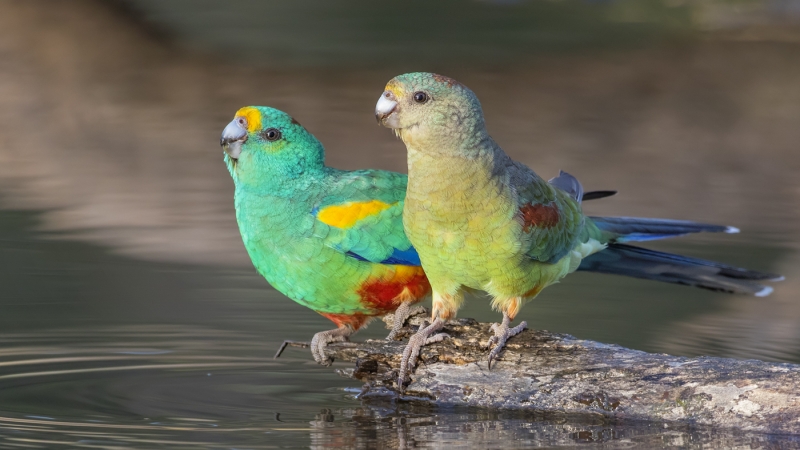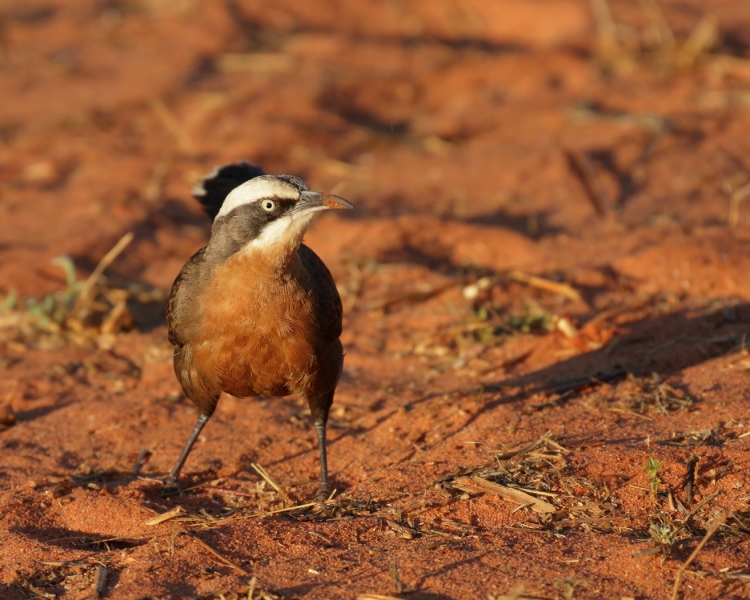The theme for this competition was to submit pictures of birds which are found in Australia's arid areas - and that's a lot of the country! A map of Australia delineating arid habitats was provided to members for this competition, but it was at the discretion of the moderating panel as to whether the species and location submitted adequately fitted the description of a bird found in an arid habitat. The moderating panel deliberations were stretched at times but in the end their decisions were sound.
This competition was open for the submission of entries through September and early October 2018. The Intermediate category attracted 70 entries, from 22 photographers. Congratulations to all who entered this competition. I was surprised and delighted by the variety and quality of entries.
Those who take the time to read this review will find that I have, overall, selected quite a different set of images than those voted as the top 5 by the membership, and which I reviewed only after writing this article. You may not agree with my final selection, but I impassionedly select images based upon the critical elements of photography and not on the species depicted in the image. Too often, I am astonished by the membership vote as the best quality images regularly score low or not at all, and more often than not the most colourful birds have the highest scores, even though there may be glaring flaws in these images.
Over the years I have spent considerable time in arid habitats across Australia and therefore I openly admit that my personal experiences will play a small part in choosing the finalists that best depict a bird in an arid environment.
As mentioned earlier, I love the array of species chosen to represent our arid birds. The wedge-tailed eagle is a constant reminder of the range of habitats in which it is found, including the most inhospitable of arid habitats. Similarly, a black-breasted buzzard flying overhead denotes the Australian inland, as do budgerigars, blue bonnets, bustards, cockatiels, wedgebills and zebra finches.
From a shortlist of ten images I have awarded the following five images.
Winner: Spinifex Pigeon, by Bill Harding (Image ID 31990)
For me, this image displays not only an arid bird species but also the quintessential arid environment. Golden spinifex and the red oxidation of the iron rich rocks portray the colours of the Australian inland. The golden-brown colours of the bird itself contrast with the rich iron oxides and as noted by the photographer, the bird’s crest compliments the spinifex spines in the background. The main subject is tack sharp with just the right amount of contrast to simulate the brightness and glare of the inland light. The image has depth and a super bokeh with a good tonal range of colours. This image is a worthy winner.
 Highly Commended: Mulga Parrot, by Bill Harding (Image ID 31989)
Highly Commended: Mulga Parrot, by Bill Harding (Image ID 31989)
The colours in this image are gorgeous. The bright blue-greens, yellows and reds in the male’s plumage offset the subtle olive greens in the female’s plumage. The two birds which comprise the main subjects are sharp and their alertness through eye contact with the observer makes this an engaging image. The early morning light casts a warm golden light across both birds, creating a wonderful 3D effect against the more subdued grey-green hues of the background. The ripples in the water adjoining the semi-submerged log add a further pleasing dimension to the composition.
 Commended: Crested Pigeon, by Cherilyn Corker (Image ID 32185)
Commended: Crested Pigeon, by Cherilyn Corker (Image ID 32185)
The uniqueness in this image captured my attention. In arid environments animals seek any form of fresh water. The crested pigeon stretching down to the water droplets falling from a leaking tap makes for a delightful composition. The bird and the primary tap are sharp with excellent contrast and the background bokeh is a smooth transition of yellow and orange tones that I associate with aridity. My only concern with this image is the dark coloured post in the foreground, which distracts from the observer’s focus on the bird. The photographer might consider removing the post in its entirety, leaving just the two taps and the pigeon to complete this composition.
 Commended: White-winged Fairy-wren, by Doug Castle (Image ID 31842)
Commended: White-winged Fairy-wren, by Doug Castle (Image ID 31842)
Not all arid habitats are defined by earthy ‘reds’ and ‘browns’; arid vegetation is often blue-grey and grey-green in colour. This image of a fairywren in such vegetation portrays a dry, harsh environment. The muted tones of the background bokeh and the vegetation highlight the vibrant cobalt blue and white plumage of the male fairy-wren. The sharpness, detail in the bird’s plumage and vegetation, and depth of field with a soft bokeh make for an excellent image.
 Commended: Grey-crowned Babbler, by Chris Dubar (Image ID 31894)
Commended: Grey-crowned Babbler, by Chris Dubar (Image ID 31894)
This image is similar to the spinifex pigeon in that it recreates the heat and light one experiences in outback Australia. I particularly like the bird’s long shadow cast by the early morning light. The orange-brown tones of the bird’s breast feathers scream protection through mimicking the tones of the red inland soils. Similarly, the red soil on the bird’s beak conveys a message of hardship in eking out an existence in such a harsh habitat.
Selecting the top five images was not an easy task and I feel compelled to mention the other five short-listed images.
The Singing Honeyeater by Barry Deakin (Image ID 31825) is a delightful image and only just missed the cut for the top five images. My preference is for a slightly closer crop and to remove the isolated stem at the bottom edge of the image.
Another image of a Spinifex Pigeon by Gary King (Image ID 31831) was also a worthy contender for the top awards, but when compared to the winning entry there was less contrast/detail in the plumage on the body and wing.
Major Mitchell’s Cockatoo by Peter Owen (Image ID 32012) rates highly in terms of overall composition but is a little flat when it comes to contrast and too much detail is lost in the highlights. The reflections of the perching birds are truncated at the lower edge of the image and there is a distracting bright line across the left-hand side of the image.
A second Major Mitchell’s Cockatoo by Hayley Alexander (Image ID 32143) is a nice image with well controlled contrast in the brighter parts of the plumage, but suffers from a lack of detail in those areas of the plumage shrouded by shadow.
Last but not least is the Blue Bonnet by Doug Castle (Image ID 31846), which is another fine image defined by blue and grey-green tones. For me, the image lacks punch, which I think would have been introduced if the birds with their bright red abdomens were facing the photographer.
Finally, I reiterate that there were many high-quality images submitted in this competition, with only minor differences in the score between the top 10 images and the top 50% of entries. I commend all those who entered this competition.
